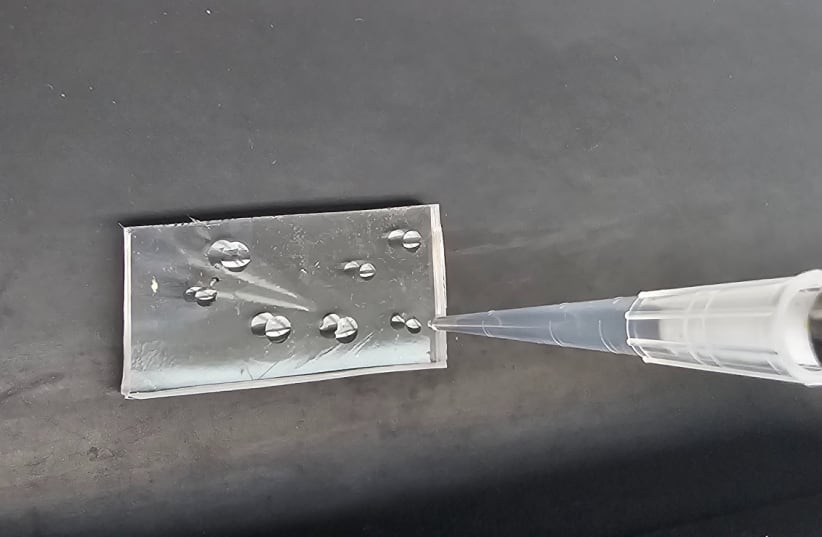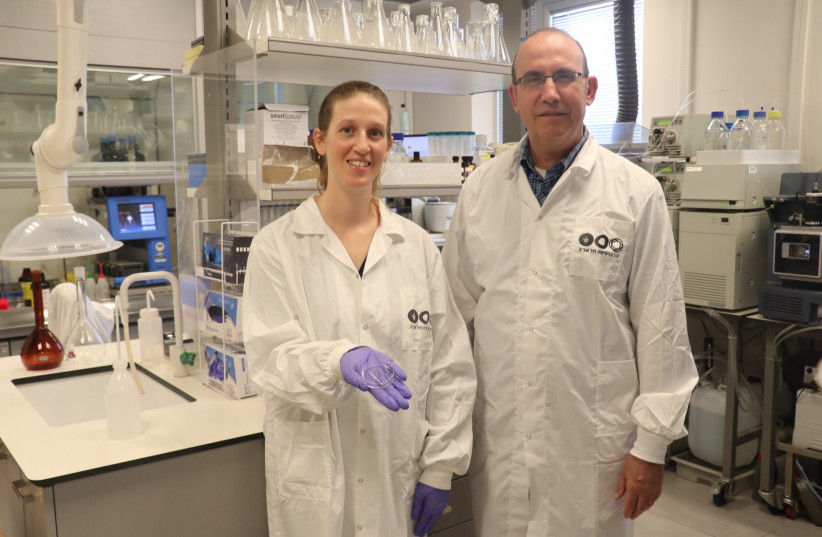Israeli innovation strikes again: TAU invents self-repairing adhesive glass
The new glass type is expected to revolutionize optics and electro-optics, satellite communication, remote sensing and biomedicine.
The research, led by PhD student Gal Finkelstein-Zuta and Prof. Ehud Gazit from the Shmunis School of Biomedicine and Cancer Research at the Faculty of Life Sciences and the Department of Materials Science and Engineering at the Faculty of Engineering at TAU, could dramatically change the sustainability and cost of tools in a variety of industries. Most notably, the discovery could revolutionize optics and electro-optics, satellite communication, remote sensing and biomedicine.
A glass that builds and heals itself
“In our laboratory, we study bio-convergence and specifically use the wonderful properties of biology to produce innovative materials,” explained Prof. Gazit. “Among other things, we study sequences of amino acids, which are the building blocks of proteins. Amino acids and peptides have a natural tendency to connect to each other and form ordered structures with a defined periodic arrangement, but during the research, we discovered a unique peptide that behaves differently from anything we know: it didn’t form any ordered pattern but an amorphous, disordered one, that describes glass.”
Gal Finkelstein-Zuta and Prof. Ehud Gazit. (credit: TEL AVIV UNIVERSITY)
How does the glass work?
The liquid glass has very little order on a molecular level, but its mechanical properties remain solid-like. While glass is usually manufactured by rapidly cooling heated materials and then freezing them in a process to crystalize glass, TAU discovered that the aromatic peptide, which consists of a three-tyrosine sequence (YYY), forms a molecular glass spontaneously, upon evaporation of an aqueous solution, under room-temperature conditions.
“The commercial glass we all know is created by the rapid cooling of molten materials, a process called vitrification” said Gal Finkelstein-Zuta. “The amorphous liquid-like organization should be fixed before it arranges in a more energy-efficient way as in crystals, and for that energy is required – it should be heated to high temperatures and cooled down immediately. On the other hand, the glass we discovered, which is made of biological building blocks, forms spontaneously at room temperature, without the need of energy such as high heat or pressure. Just dissolve a powder in water – just like making kool-aid, and the glass will form. For example, we made lenses from our new glass. Instead of undergoing a lengthy process of grinding and polishing, we simply dripped a drop onto a surface, where we control its curvature – and hence its focus – by adjusting the solution volume alone.”
“This is the first time anyone has succeeded in creating molecular glass under simple conditions,” said Prof. Gazit, “but not less important than that are the properties of the glass we created. It is a very special glass. On the one hand, it is very strong and on the other hand, very transparent – much more transparent than ordinary glass.
"The normal silicate glass we all know is transparent in the visible light range, the molecular glass we created is transparent deep into the infrared range. This has many uses in fields such as satellites, remote sensing, communications and optics.
"It is also a strong adhesive, it can glue different glasses together, and at the same time it can repair cracks that are formed in it. It is a set of properties that does not exist in any glass in the world, which has great potential in science and engineering, and we got all this from a single peptide - one little piece of protein.”
THIS PAGE WAS POSTED BY SPUTNIK ONE OF THE SPUTNIKS ORBIT BLOG
HTTPS://DISQUS.COM/HOME/FORUM/THESPUTNIKSORBIT-BLOGSPOT-COM/




No comments:
Post a Comment